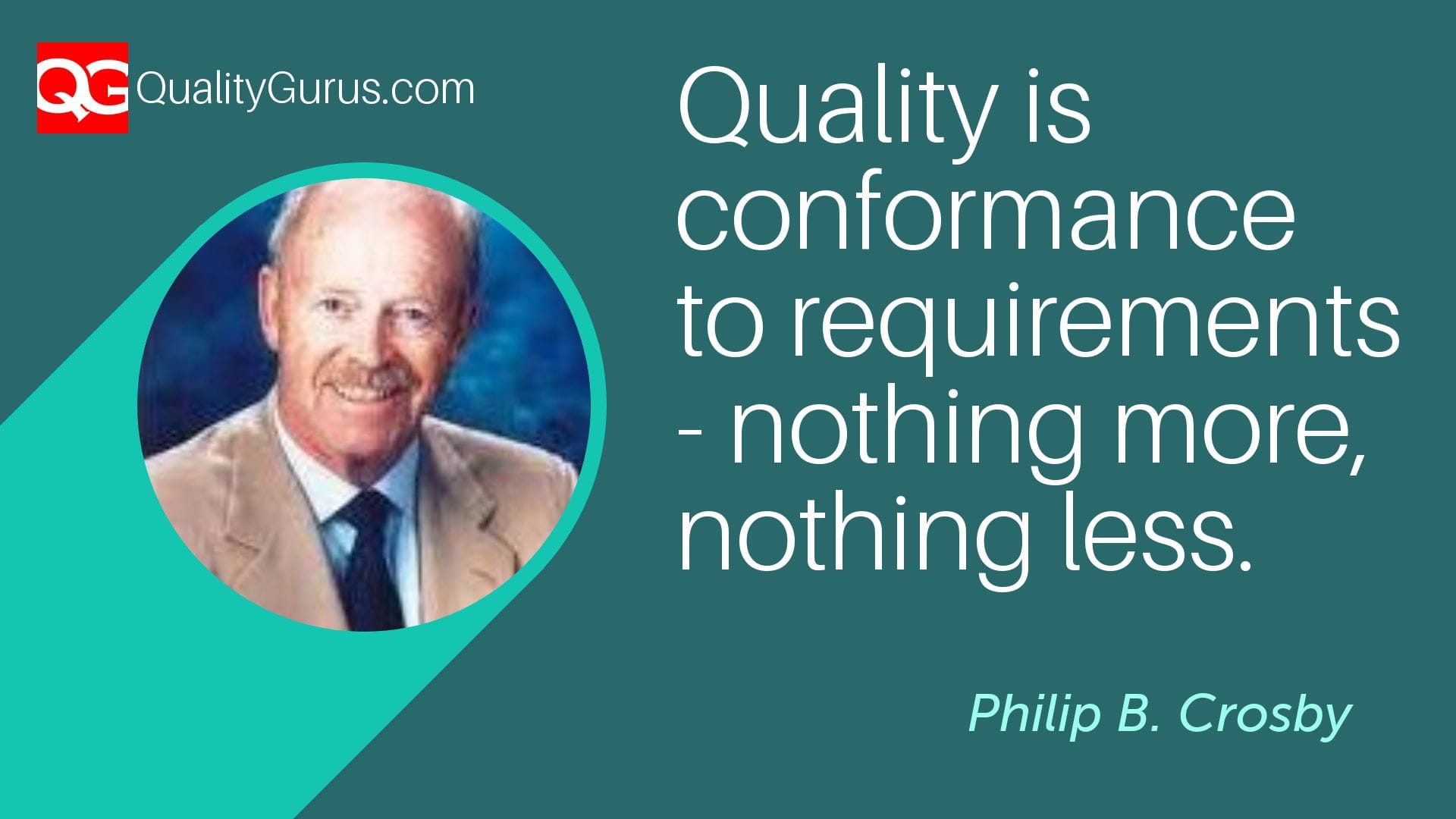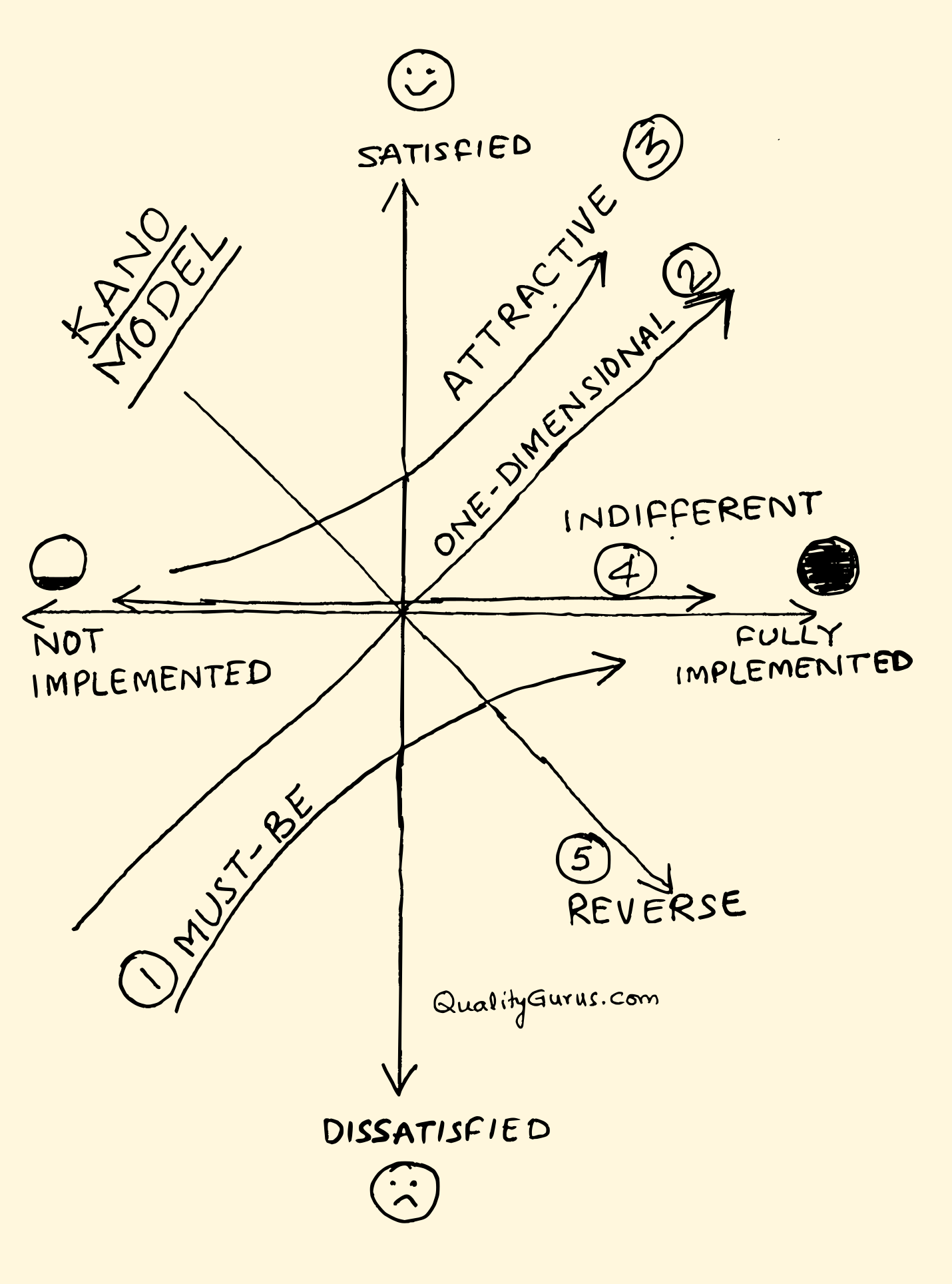
Born: Jun 18, 1926
Died: Aug 18, 2006
Philip Crosby is best known for:
Quality is Free - His first book that made him famous.
Zero Defects - One of his four absolutes of quality.
The Four Absolutes of Quality - See the details below.
The Crosby Vaccine - for management to prevent poor quality
The Fourteen Steps of Quality Improvement
KEY Takeaways
A Brief Introduction:
The founder and chairman of the board of Career IV, an executive management consulting firm. Crosby also founded Philip Crosby Associates Inc. and the Quality College. He has authored many books, including Quality is free, Quality without tears, Let's talk Quality, and Leading: The art of becoming an executive. Crosby originated the concept of zero defects.
Timeline
1979: Philip Crosby started the management consulting company Philip Crosby Associates, Inc.
1979: Crosby published his first business book; Quality Is Free.
Four Absolutes of Quality
Crosby's response to the quality crisis was the principle of "doing it right the first time" (DIRFT). He also included four major principles:
The First Absolute
The definition of quality is conformance to requirements (not as goodness)
The Second Absolute
The system of quality is prevention (not appraisal)
The Third Absolute
The performance standard is zero defects (not "that's close enough").
The Fourth Absolute
The measurement of quality is the price of nonconformance (not indexes)

The Crosby Vaccine
In the Crosby style, the "Vaccine" is explained as medicine for management to prevent poor quality. It is in five sections that cover the requirements of Total Quality Management.
Integrity
Treat quality seriously throughout the whole business organization from top to bottom. The company's future will be judged on its performance on quality.
Systems
Appropriate measures and systems should be put in place for quality costs, education, quality, performance, review, improvement and customer satisfaction.
Communication
The communication systems are of paramount importance to communicate requirements and specifications and improvement opportunities around the organization. Customers and operators know what needs to be put in place to improve, and listening to them will give you the edge.
Operations
Work with and develop suppliers. Processes should be capable, and improvement culture should be the norm.
Policies
Policies must be clear and consistent throughout the business.

The Fourteen Steps to Quality Improvement
1. Management Commitment
Make it clear that management is committed to quality.
2. Quality Improvement Teams
Form Quality Improvement Teams with senior representatives from each department.
3. Measure Processes
Measure processes to determine where current and potential quality problems lie.
4. Cost of Quality
Evaluate the cost of quality and explain its use as a management tool.
5. Quality Awareness
Raise the quality awareness and personal concern of all employees.
6. Correct Problems
Take actions to correct problems identified through previous steps.
7. Monitor Progress
Establish progress monitoring for the improvement process.
8. Train Supervisors
Train supervisors to actively carry out their part of the quality improvement program.
9. Zero Defects Day
Hold a Zero Defects Day to reaffirm management commitment.
10. Establish Improvement Goals
Encourage individuals to establish improvement goals for themselves and their group.
11. Remove Fear
Encourage employees to tell management about obstacles to improving quality.
12. Recognize
Recognize and appreciate those who participate.
13. Quality Councils
Establish Quality Councils to communicate on a regular basis.
14. Repeat the Cycle
Do it all over again to emphasize that the quality improvement process never ends.



